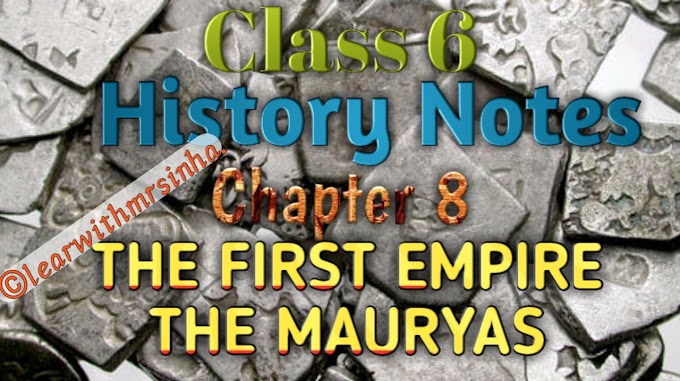History Notes
Class 6
Early Humans – II
In this chapter we will learn about early humans for class 6. Humans settled down after 10,000 years ago, during the new stone age.
Achievements of Humans during this period
- Humans started producing food:- first cereals to be grown were wheat and barley. Sickles might be have been used to harvest crops. Thus from food-gathers, human become food-producers.
- Humans started domesticating animals:- They tamed animals such as dogs, pigs, goats, sheep, cattle, horses and donkeys. Goat and cattle to get milk, wool and meat. The horses and donkeys were tamed to carry burden.
- Humans invented the wheel:- The potter’s wheel came to be used during this period.
- Humans make pottery:- Humans learned to make clay pottery, which was shaped by hands, and then baked in a fire. Later they started glazing and decorating the pots.
Archaeological evidences
Archaeological evidences of this age include pits-houses, pottery, tools, human and animal burials and paintings.
- Charred grains and seeds of wheat, barley and many kinds of lentils has been found from Burzahom (in Jammu & Kashmir), Mehrgarh and other Sites.
- Many pit-houses have been found at Burzahom. It
contains Ash, Charcoal and pieces of pottery. Some pits may be used to cook
for. Whereas some for living when the weather was cold.
- Hand-made and wheel-made pots were also
discovered (some are decorated). These pots were used for cooking and storing
grain.
- Tools made of stones (maximum), bones and horns
of animals have been found. Most of them were polished. The bone tools include
harpoons for fishing, needles for sewing, and arrowheads, spearheads and
daggers for hunting.
· In Burzahom burials of humans and animals were found.
· Early humans lived in small groups with a group leader. Bartering surplus goods started early trade. Singing, dancing and painting must have been popular mode of entertainment.
The Chalcolithic Age (4000-2000 BC)
Around 6,000 years ago, humans
started using copper which were more strong than stone. Since both stone and
copper were used, this period is called the Chalcolithic Age or Copper-Stone
Age.
The North-West
Mehrgarh (in Pakistan) is the earliest
known farming and pastoral settlement in the Indian subcontinent. Perhaps it
was here that humans first grew crops and tamed animals.
The earliest evidence of settlement here dates to 7000 BC
(about 9,000 years ago). Charred grains and bones of animals have been found
here. Archaeologists have divided this Stone Age site into several periods.
Period I (7000-5500 BC)
·
Wheat and barley were perhaps the main
crops.Period II (5500-4800 BC) & Period III (4800-3500 BC)
Science Notes Class 6
The North East
In the Garo Hills, many sites in places such as
Selbagiri, Thenbrongri, Mismagiri and Rongram Alagiri have yielded material
remains of the Stone Age.
In Manipur, stone and bone tools have been found.
In Tripura, places such as Teliamura, Jirania,
Mohanpur, Bishalgarh and Agartala have yielded Stone Age remains. Here instead
of stone, fossil wood, which is locally available, was used to make tools.
Daojali
Hading is
an important Neolithic site in Assam. Extensive digging at this site has
yielded polished stone tools, ceramics and kitchen items such as corn grinders,
pestles and mortars. A large number of pots have been found. All these finds
suggested that peoples here were growing and storing grains and preparing
foods.
*****
About early humans for class 6, early humans class 6







0 Comments